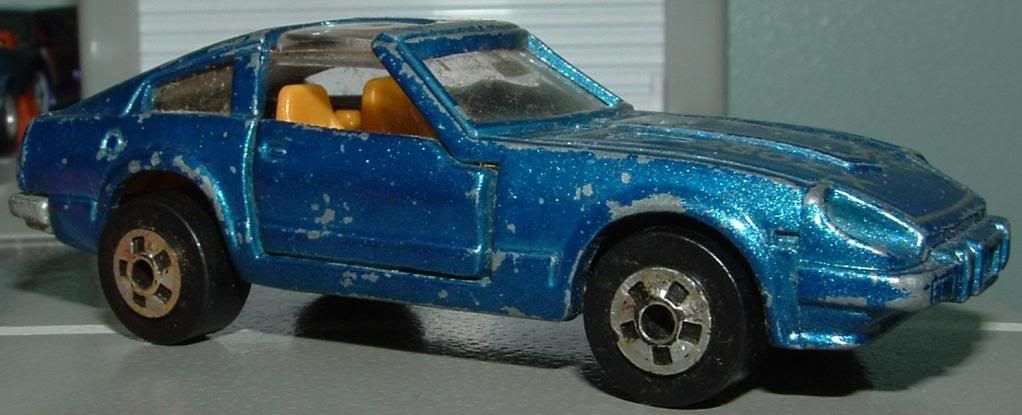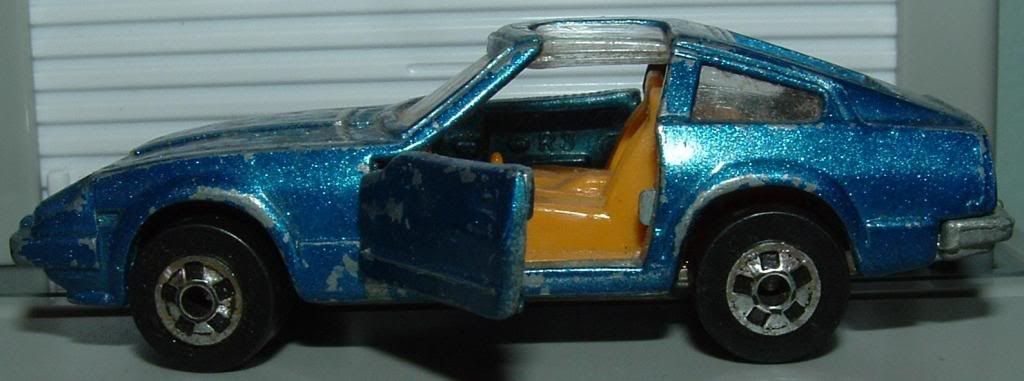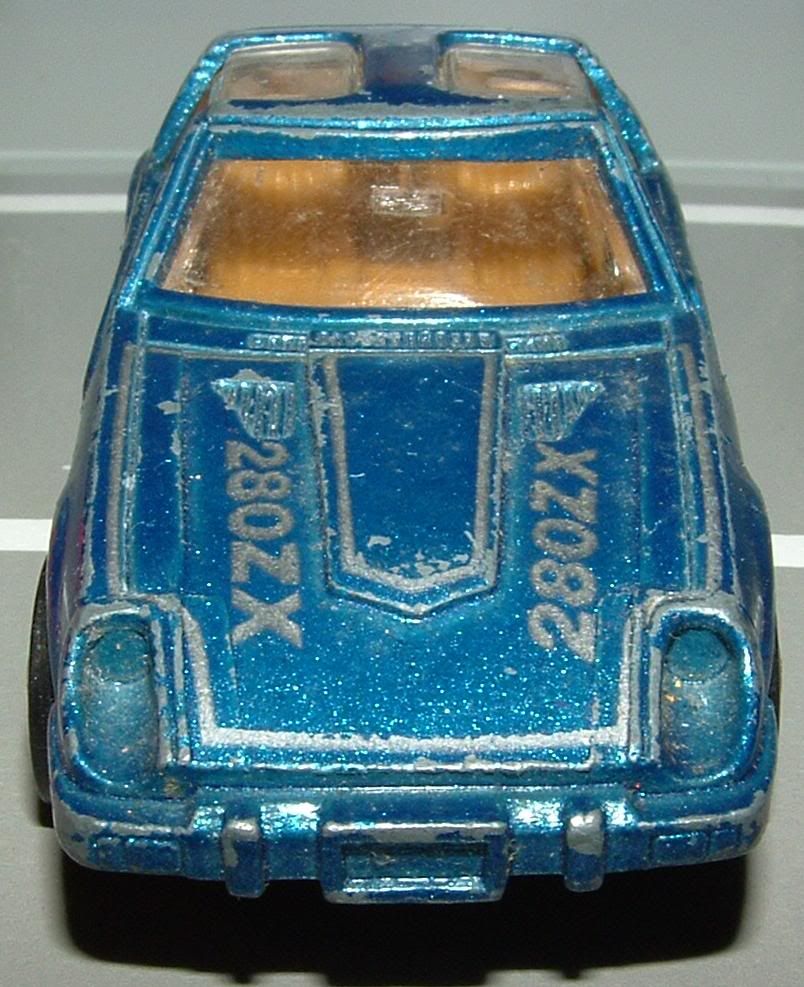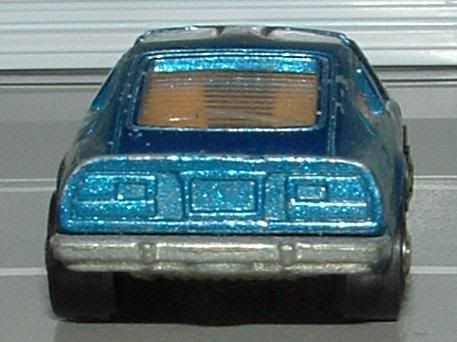
A blog focusing on 1/64 diecast from such popular brands as Hot Wheels, Matchbox, Johnny Lightning, M2 Machines, GreenLight, Tomica, Yat Ming, Majorette, MotorMax, Siku, Corgi, Guisval, Playart, Ertl, Zylmex, Racing Champions, & many more. Swifty's Garage features a daily Car Of The Day and news updates from your favorite brands!
Monday, August 1, 2011
Car Of The Day: August 1, 2011
Today's car of the day is Road Champs' 1982 Datsun 280ZX.
The Nissan 280ZX (also known as the Datsun 280ZX and Fairlady Z) was a sports coupe produced from 1978 to 1983. It was the second generation Z-car, replacing the Datsun 280Z in late 1978. The 280ZX was the first time where the "By Nissan" subscript was badged alongside the Datsun logo, along with the Nissan trucks. The 280ZX was Motor Trends Import Car of the Year for 1979. The 280ZX was replaced by the Nissan 300ZX in 1984.
For more information and pictures of the real car please visit: Datsun 280ZX
The Nissan/Datsun Z-Cars are well-represented in small scale, and the 280ZX in particular is probably the single most popular of the bunch.
The 280ZX was branded in the American and Australian markets as the Datsun 280ZX; and in the local Japanese market as the Fairlady Z. In the 1979 model year in the American market, it was co-branded Datsun by Nissan through the 1983 model year. These were considered transition years as Nissan began to phase in their new global brand under the Nissan name.
The Japanese market got both 2.0 L and 2.8 L engines. The 2.0 L-engined Fairlady 280Z used the L20 engine common in Nissan family cars of the same era. Export markets all got the L28-powered version. The preference for 2.0 L engines in the Japanese market was a by-product of taxation laws.
Two trim levels were offered in America, with a no-frills 2-seater and the Grand Luxury (GL) ZX carrying the full equipment list. Leather seats were optional, and an optional digital instrument cluster was introduced in 1982.
Nissan gave the 280ZX a face lift in 1982 with revised NACA ducting in the hood, new alloy wheels (14 in. 6-spoke alloys for non-turbo models, and 15 in. 4-spoke alloys for turbo models), a revised B-pillar garnish, new pin-stripe style tail-lights, and rubber bumper over-riders replaced the earlier model's chrome and rubber items. Interior changes were minor but included new seat trim styling. The 1982 model also was the first to offer the popular voice warning system, which warned the driver when headlights were left on after the vehicle was turned off, if the parking brake was on while the vehicle was in motion, and many other warnings.
This facelifted model has since come to be called the "Series II" 280ZX.
Power steering became standard equipment with a new rack-and-pinion system, rather than recirculating ball. Changes were made to the rear suspension layout, which also meant the exhaust pipe now exited from the left, rather than right-hand side.
As in 1981 both turbo and normally aspirated engines were offered, but non-turbo cars now used the uprated L20E for the Japanese Market or L28E for the export market, which on the 2.8L version, due to increased compression, were rated at 145 hp (108 kW) rather than the earlier engine's 135 hp (101 kW). With these performance modifications the 280ZX still could not keep up with the faster Volvo 240 Turbo Intercooler (8.5s) or the BMW 325 (8.4s) as it boasted a sluggish 9.4 second acceleration time and average 1/4 mile time. The 1983 280ZX Turbo however saw a cylinder head change, as the P90 head was phased out for the P90A, which used hydraulic lash adjusters, rather than the conventional adjustable lash adjusters. This produced a nearly silent-running engine, required no valve clearance adjustment, and eliminated the valve noise that the L series engines are prone to. It has since become a popular modification on 1983 Turbos to remove the P90A head and replace it with the earlier P90, as the hydraulic lash adjusters are no longer available, and have proven unreliable after many years of use.
The (US market only) 280ZX Turbo was offered with a manual transmission; this was a Borg-Warner T-5 5-speed model (this was the first Nissan and Japanese car in general which used a non-Japanese transmission; the T-5 was also used, most notably, in the GM F-bodies and Ford Mustang) in addition to numerous other American domestic vehicles.
Spring rates and sway bars were revised, which largely addressed the handling nervousness of the early 280ZX Turbo, and reviews confirmed that the 1982 280ZX Turbo was the most sporting Z-car since the original 240Z of 1970.
Subscribe to:
Post Comments (Atom)







No comments:
Post a Comment